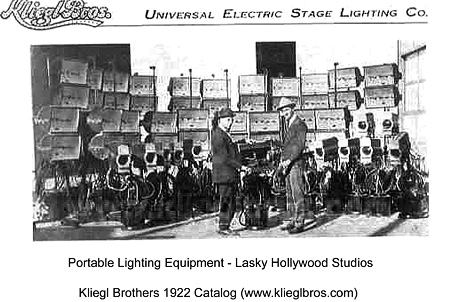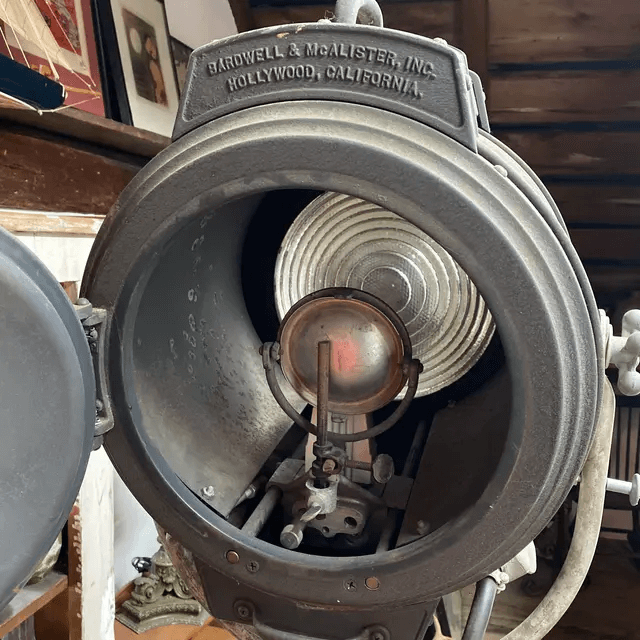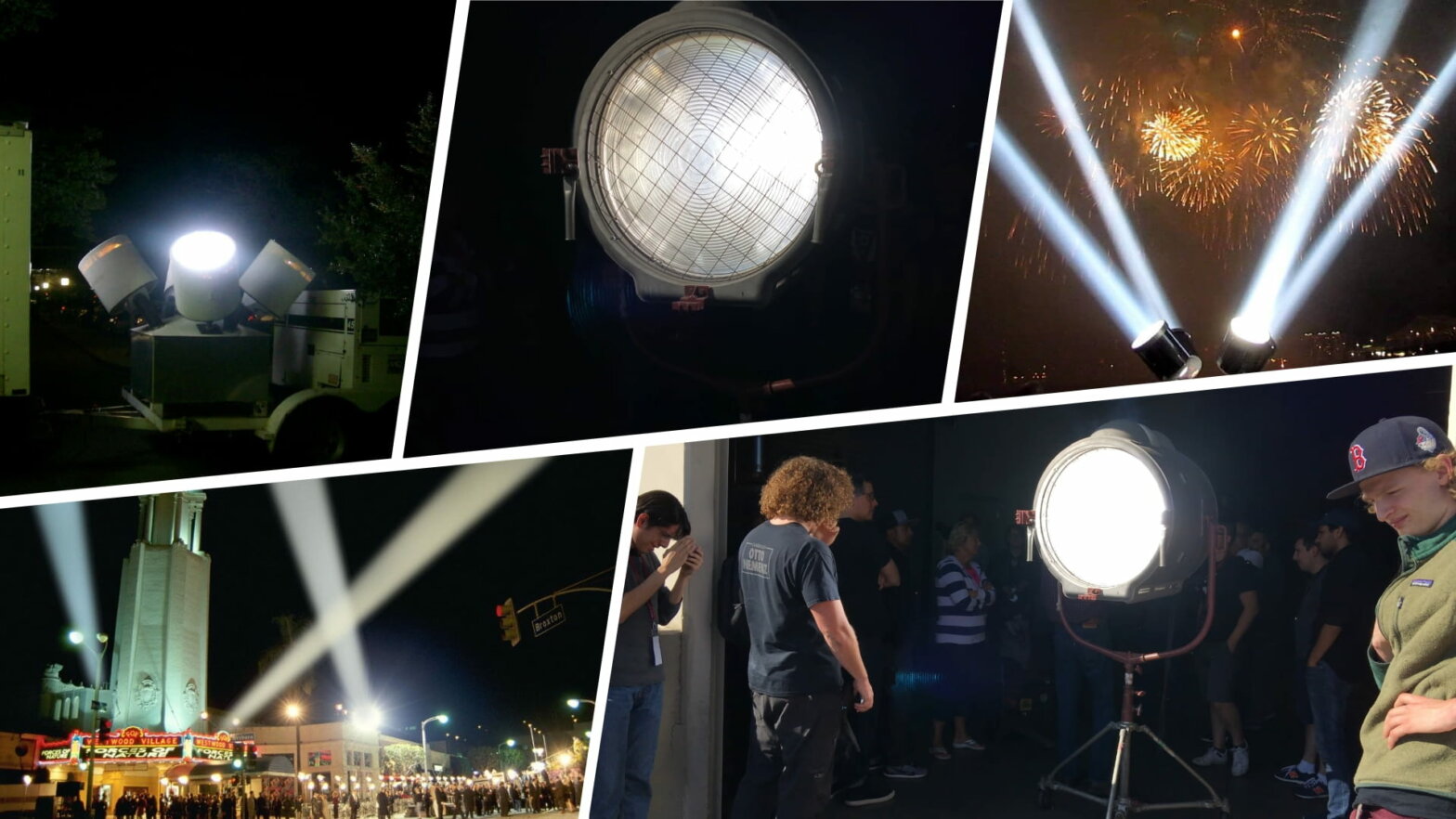One of the most iconic lights in Hollywood is undoubtedly the Klieg light. Whether it be on-set or on the red carpet, the Klieg light has become somewhat of a symbol of cinema. It’s use over time, however, has diminished. Today, the light is practically obsolete. Yet the term is still used today in a symbolic context. So what is the Klieg light? In this article, we’ll take a deeper dive into the rise and fall of the light in the film industry. We’ll also take a look at the various components of the Klieg light that contribute to its notoriously intense light source.
What is a Klieg light in cinema?
First, let’s define Klieg light
You may not know what Klieg light means, but believe it or not you have probably seen a movie or two that utilized them. Let’s look at the Klieg definition to better understand the iconic light fixture.
KLIEG DEFINITION
What is a Klieg Light?
A Klieg light is a carbon arc lamp that used to be a popular lighting source in filmmaking. The term Klieg light was used to describe most ellipsoidal reflector spotlights. The light was so intense and so bright that it was commonly used to shoot day scenes at night time. The intensity of the light in fact caused vision impairment in many actors. Many refer to this unfortunate consequence as “Klieg eye.”
The Klieg light's reign in the film lighting world was short lived. They soon became less utilized when larger incandescent "globes'' arrived. Incandescent globes became the light source of choice due to convenience and the fact that they could fit into varying fixtures.
What is a Klieg light made of?
- Lens
- Reflector
- Generator
- Carbon arc system
What is a Klieg light used for?
History of the Klieg Light
During the earliest days of cinema, filmmakers came across an inevitable problem: a lack of proper light sources. At the time, the light sources that existed such as incandescent sources did not produce enough light to properly and consistently expose images with the current camera and film technology.
It was apparent that intense, direct light sources were required. To fulfill this demand, a carbon arc sourced light was created by the Kliegl Brothers Universal Stage Lighting Co. around 1912.

Klieg lamp invention
Brothers Anton and Johann Kliegl created a light produced by a carbon arc system that on a clear night, could be seen from miles away. As studios and film production started gaining mainstream attraction, the Kliegl brothers' revolutionary light sources became a staple on-set.
However, this reign was short-lived. The Klieg searchlight, despite being incredibly bright, was incredibly inconvenient. Carbon arc lamps could only fit into very specific fixtures. They also were quite difficult to operate.
Take a look at this demo of the light in use.
Carbon Arc light demo
As they got incredibly hot during use, the carbon rods within the light would need to be replaced every two hours. The light operator also needed to wear protective gloves and eyewear. Not to mention countless actors had their vision impaired by being lit by these lights both on stage and for the screen.
Soon, incandescent "globes" come on the scene. Their ability to fit into varying fixtures and more convenient ease of use made carbon arc lights much less popular. Today, spotlights that look similar to the Klieg light function differently utilizing gas. But how exactly did the original light operate?
Related Posts
What is Klieg Light
How Does a Klieg Light Work?
The Klieg-light has various components that all contribute to the notoriously intense light it produces: the carbon arc, the reflector, the lens, the generator, and the casing.
Carbon arc
The carbon arc of a Klieg is the genesis of its light source. Essentially, two carbon rods are heated to a point where they glow and create an arc of light that radiates between them. Check out the video below to see how a carbon arc system light source is created within the light.
Carbon Arc light demo
Reflector
To actually create wattage from this light source, the light needs to be reflected. Thus, these lights use a reflective drum surface within the fixture to amplify the light wattage. The reflector is typically made of copper and plated in nickel and rhodium to be incredibly reflective.
Lens
The lens of a Klieg light is designed to focus and spot the light source into a controlled beam. Typically, these lights contained two plano-convex lenses or a single step lens. This concentrated the light intensity into the iconic beam that emits from them.

Carbon Arc light demo
Generator
To power the whole light fixture, a generator was needed. Generators that powered Klieg lights were typically gas operated and weighed over 2,000 pounds. The typical generator for this function needed to produce up to 16,500 watts to create the amount of power needed for the light source.
Casing
Finally, all of the heat generated by the intense light source required a specific type of casing. Most lights were cased in either steel or aluminum so that they could withstand the hot temperatures generated by the light.
All of these components were necessary to create a light source that produced roughly 800 million candle power. While they may not be utilized today, Klieg lights were a workhorse in early cinema and undoubtedly helped bring the industry to where it is today.
Up Next
What is Key Light?
Because of its brightness and intensity, Kliegs light were a very popular choice to use as a key light for a scene. What is a key light? Check out our next article to learn more about one of the most important types of light sources in any lighting setup.
Up Next: Key Light Explained →
Showcase your vision with elegant shot lists and storyboards.
Create robust and customizable shot lists. Upload images to make storyboards and slideshows.
